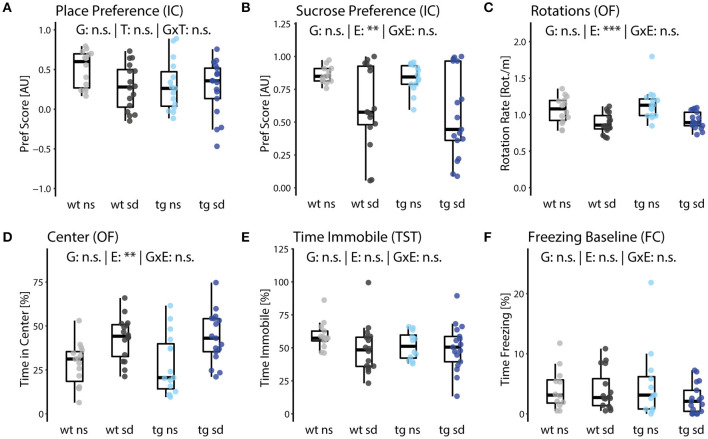Figure 3.
Impact of psychosocial stress on positive and negative valence systems. (A) Positively reinforced spatial learning (place learning) in the IntelliCage showed no significant difference between groups. (B) Preference for sucrose water and (C) frequency of directional change (rotations per distance traveled) in the open field test are reduced in the sd groups of both genotypes [E: (B) F(1,49) = 12.6, p = 0.0043; (C) F(1,49) = 19.32, p = 6.8E-4]. (D) Animals of the sd groups spent relatively more time in the brightly lit center of the open field arena [E: F(1,49) = 12.5, p = 0.004]. (E) Struggling behavior measured in the tail suspension test and (F) general freezing behavior in a novel environment (fear conditioning box) did not differ between groups. Data are shown as box plots with whiskers extending to no more than 1.5-fold IQR; **p < 0.01, ***p < 0.001, n.s., not significant; p-values are FDR-corrected and refer to Wilk's lambda testing two-way ANOVA; n = 15/17/15/17. G, genotype term; E, environment term; G×E, interaction term.

